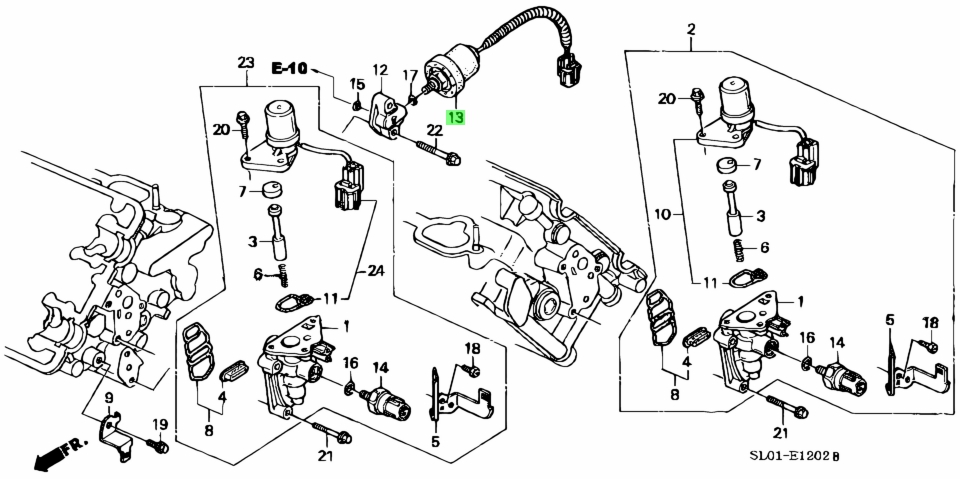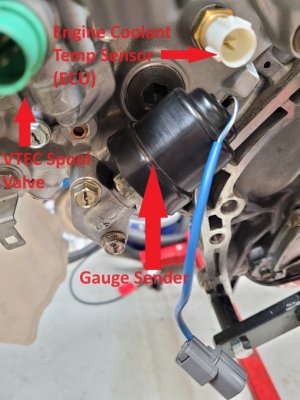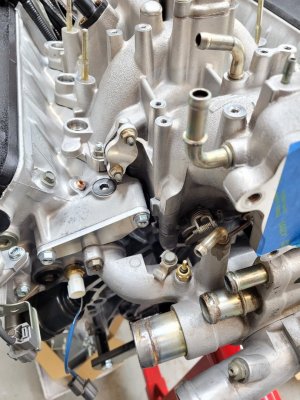- Joined
- 26 January 2021
- Messages
- 1
Is it normal for oil pressure to be almost zero on the gauge at idle?
/
/
At zero as in the gauge does not move off the lower peg? That is definitely not normal. Is the red low oil pressure light illuminated which would indicate very low oil pressure or does it go out? If the low oil pressure light goes out your first step should be to check the operation of the gauge as described in the Electrical section of the service manual.Is it normal for oil pressure to be almost zero on the gauge at idle?
/
This is a common issue on the early NSXs. On the 1991-93 NSX gauges and the 94+ gauges, idle oil pressure should show on the gauge. Once it is up to operating temp, the needle should be around the first mark.Is it normal for oil pressure to be almost zero on the gauge at idle?
It's the sender. The gauge was only defective in some of the 1991 cars. You can get a new sender from Acura or Honda Japan.I bought my 1996 NSX in 2003. From the time I bought it, the gauge has been on 0. Sometimes it might hop up to the very first hash mark. Most of the time it just sits on 0. I have driven it every way there is- fast, slow, traffic, hiway, twistys. Is it the gauge? Is it the sending unit? I don't know. I have just accepted that that's the way it is. I would love to have it working, but I don't want to turn into a dog chasing its own tail and getting nowhere. And trying to find someone in St. Louis that you can trust is a true crap shoot.
My car is from St. Louis. The previous owner had it serviced at Mungenast Acura.I bought my 1996 NSX in 2003. From the time I bought it, the gauge has been on 0. Sometimes it might hop up to the very first hash mark. Most of the time it just sits on 0. I have driven it every way there is- fast, slow, traffic, hiway, twistys. Is it the gauge? Is it the sending unit? I don't know. I have just accepted that that's the way it is. I would love to have it working, but I don't want to turn into a dog chasing its own tail and getting nowhere. And trying to find someone in St. Louis that you can trust is a true crap shoot.

Yeah the culprit is the sender, not the pressure switch on the filter pedestal. All the pedestal switch does is light up the oil pressure idiot light in the dash if it drops below a certain pressure.Looks like you're right (I need an icon for not-surprised) - it's probably not the $30 passage that's the problem.
PASSAGE, OIL PRESSURE SENSOR, 37241PR7A00, $23
SENSOR, OIL PRESSURE, 37245PR7A02, US$151 from Amayama
Checking the sensor and/or replacing it seems pretty straightforward according to p 23-137 of the 97 service manual, available in the Prime library, especially if you're changing the oil anyway.
Honda 37245-PR7-A02 (37245PR7A02) SENSOR, OIL PRESSURE
Honda 37245-PR7-A02 (37245PR7A02) SENSOR, OIL PRESSURE. New & genuine Japanese car parts. Fast shipping. Low prices. Request a quote from Amayama Trading Co. online.www.amayama.com


